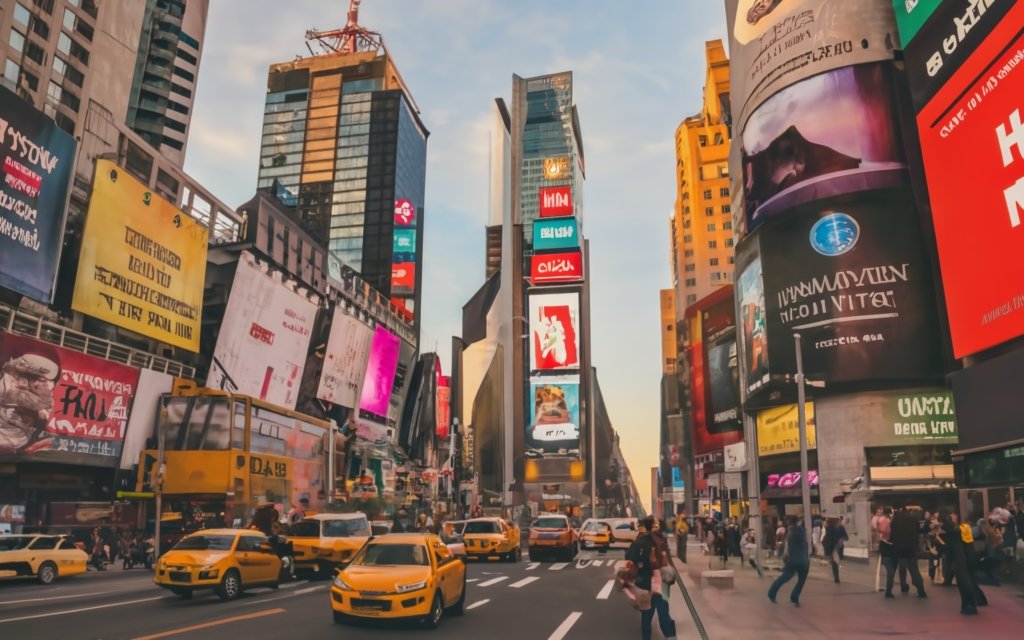
- 17 Jan 2024
- Dan
- Advertising
- Comments: 0
Outdoor advertising is a multi-billion dollar industry for a good reason – it works. From billboards to bus shelters to display racks, advertisements in public spaces effectively reach massive audiences each day.
However, simply having a big ad is not enough. There is an art and a science behind creating outdoor advertisements that capture people’s attention and influence their purchasing decisions.
This article will explore some of the key psychological principles that make certain outdoor ads more memorable and impactful than others.

Content
The Power of Simplicity
One of the biggest challenges with outdoor advertising is that you only have a few seconds to engage a passerby before they move on. Because of this, effective outdoor ads keep their message and design incredibly simple. Cluttered ads with too much text or complex graphics are unlikely to be processed in such a short window of time.
The most memorable outdoor ads often use bold colors, large fonts, and minimal copy or images to convey their message in an instant. Simplicity allows the key information to jump out at viewers right away without extra cognitive effort.
Emotion Over Information
When designing outdoor ads, advertisers need to understand that people are not actively seeking out product information in public spaces. They are simply going about their daily activities. As a result, ads that rely too heavily on facts, features, and benefits are less likely to break through the mental clutter.
Emotionally engaging ads perform much better because they tap into feelings like happiness, humor, fear, sex appeal, and social status – things that naturally grab our attention. An ad with an amusing joke or that makes people feel good about themselves is more shareable and memorable than one that lists product specs.
The Power of Association
Another psychological technique used in effective outdoor advertising is association – linking the product to positive images, lifestyles, or experiences that people desire.
or example, an alcohol brand may show attractive social groups enjoying drinks together to associate their product with fun times and friendship.
Car companies commonly pair their vehicles with scenic landscapes to invoke feelings of adventure and freedom.
Associating products with aspirational goals is an easy way for ads to mentally connect with viewers on a deeper level beyond just promoting features.
The Importance of Display Racks
Interestingly, some research has found that ads placed near locations where products are actually purchased tend to be more impactful.
For example, ads for grocery items near supermarket entrances or ads for electronics near big box retailers seem to perform better than those in more general downtown areas. This could be because the association between the ad and potential point of purchase creates a stronger mental link in viewers’ minds.
It primes them to actually act on the advertisement when they are in the right context to do so. Display racks inside stores serve a similar purpose by reminding shoppers of a product at the moment of purchase decision.
Using Scarcity and Social Proof
Two other psychological techniques sometimes employed in outdoor advertising are scarcity and social proof. Scarcity ads imply that the offer or opportunity is only available for a limited time to create a sense of urgency.
Viewers are more likely to act quickly out of fear of missing out. Social proof ads show many other people already enjoying the product to imply that everyone else has deemed it worthwhile.
This taps into our inherent desire to conform to perceived social norms. While these tactics are not always appropriate, they can be effective when used judiciously as part of an overall advertising campaign.
The Power of Emotions in Outdoor Advertising
In summary, the most memorable and impactful outdoor advertisements understand basic human psychology. They keep designs simple yet arresting. They connect with emotions over information.
They form positive associations between the product and viewers’ desires. And they sometimes use proven techniques like scarcity, social proof, and product-location associations.
By tapping into feelings rather than just facts, the best outdoor ads have the power to influence purchasing decisions long after viewers have walked away from the initial impression. With clever use of psychology, advertisers can turn public spaces into an impactful stage for their brands.

Hi, I’m Dan and I write blogs for businesses. I’ve been doing this since 1994 and have written over 10,000 blog posts (and counting). I love writing about what you’re passionate about and how to make your business successful. So if you want to know more about blogging or social media marketing, just let me know!

